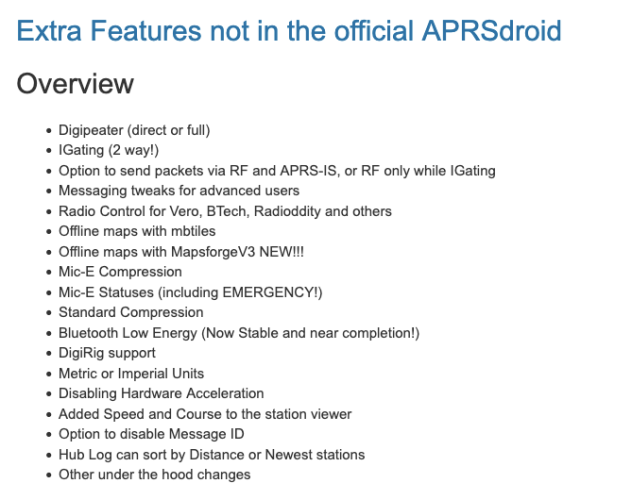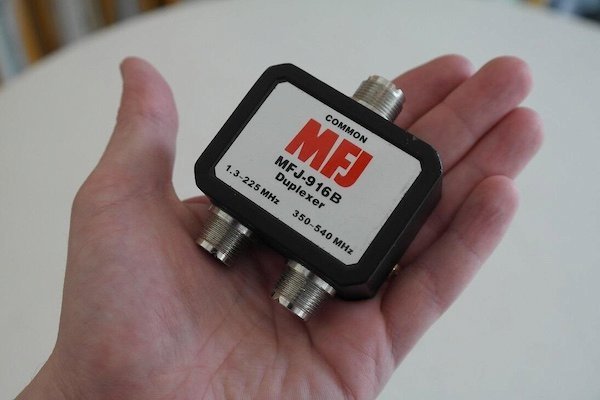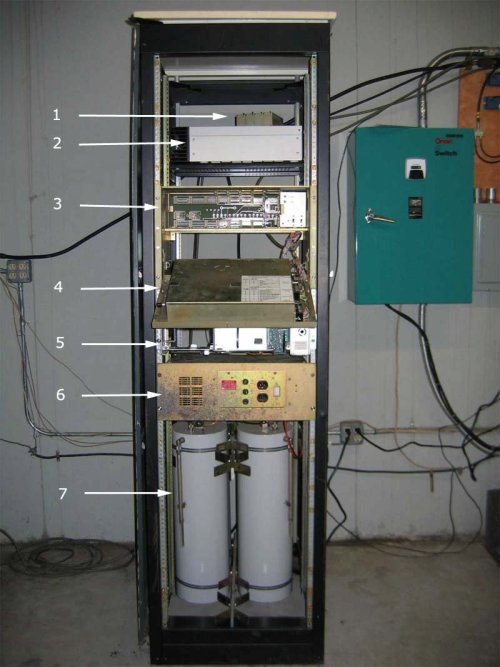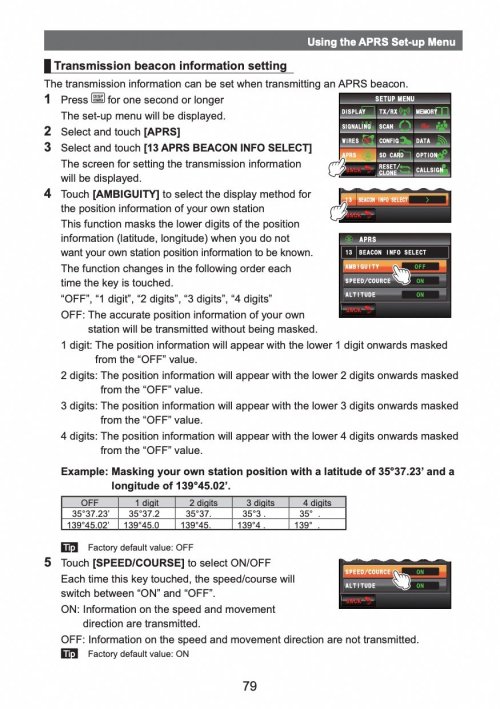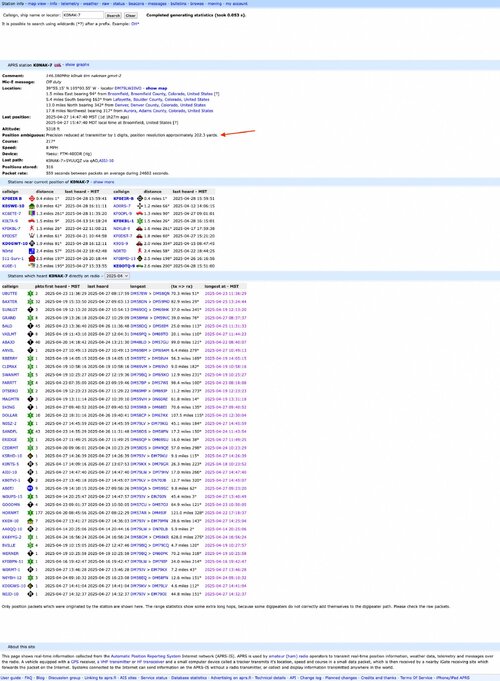@nakman, that question may not be a simple just do this-or-that to solve. There's a few things probably that were happening.
First thing is probably to understand how your radio works compared to the way Marco does it. Your radio is sort of two radios in a box while he's running two completely independent radios. The difference is key.
The FTM-400 has two receivers but only one transmitter it can use at a time. And even with two receivers they aren't completely independent of what's happening on the other side.
The main thing is the APRS side
can never transmit when the voice side is transmitting. You might find this is rare or often. It gets back to how APRS works (this is a broad topic, network theory and all that) but the key thing here is position packets don't usually get queued or retried, they are sent when they are ready. If the APRS has a packet but you have the PTT keyed that packet is sent to the trash and the timer on the next one starts. So for the sake of argument let's say you're sending a position every 2 minutes. If you're talking when one is ready causing it to be skipped that gap between packets will be 4 minutes.
In Marco's case the APRS radio doesn't care. He can be talking on his voice radio while the APRS radio sends the packet. How often this happens of course varies. With 4 or 5 of you that's probably pretty unlikely. With two stations in an active QSO it could be a lot of skipped packets in the FTM-400 station comparatively.
Next way a packet TX is skipped is going to depend on your radio settings. The radios that can do voice and APRS simultaneously still
may not send even if the voice side is
receiving. This is to prevent the voice side from dropping out.
There's no way to transmit and receive at the same time in a radio as tightly packed as an FTM-400 and especially using one antenna. Normal repeaters do this using what's called a
cavity duplexer, which is a device about half the size of a refrigerator that prevents the high energy from the transmitter from blowing out the very sensitive receiver circuit. To be clear, here, a digipeater works differently, using a store-and-forward approach that allows RX and TX on one antenna and in fact the exact same frequency. But there's a time delay added.
If you don't use one of those approaches you must use a
diplexer or a physically break the path using relays to prevent this cross over. You can in theory fit a diplexer in the space of mobile radio, which would allow VHF and UHF to operate on the same antenna but it's physically impossible with two VHF frequencies in the space of a mobile radio this way. A diplexer requires many tens of MHz difference in frequencies to isolate each side, so a physically large duplexer is the only option.
Interesting (maybe) fact is I actually use the same antenna for APRS and GMRS using a diplexer. I can do this because my APRS radio is VHF-only and my GMRS is UHF-only. They can coexist happily with the diplexer.
Since Yaesu can't predict what you're going to do they take the safest approach, which is to totally disconnect the antenna from the voice side when the digital side transmits. It's annoying and potentially worse (to miss key information perhaps) to have a lot of gaps in a voice QSO. So the radio may give you the option to choose. If voice RX is given priority over APRS TX that could lead to quite a lot more missed packet transmit opportunities during an active QSO with lots of stations keeping your RX squelch open. If I was to guess if this is a setting you can do in an FTM-400 (to let it blank the voice RX for an APRS TX or not to interrupt).
The final difference is in dual RX itself. He has two radios that really are always listening during RX. Even with two RX frequencies not all dual VFO radio can really hear, demodulate (and decode for APRS) two things at
exact same time. The old FT-8800 had the option to reduce the volume of the secondary channel to make it obvious that the primary was receiving, for example. I would think the FTM-400 would be smart enough but it still might have a shared signal path that prioritizes one active RX over the other.
You may see reference to MIC-E. This was a technique originally intended to make position packets so short that they could be burst at the start or end of a voice TX. When two stations fully implement MIC-E each time a voice TX is made their positions are updated. But in practice MIC-E has just become a way to make highly compressed packets for APRS.
There's a lot more technical beyond this as to why APRS works or doesn't.
Many APRS stations are poorly tuned and set up. It's kind of amazing the whole thing works as well as it does. The main solution used is more power to overcome deficiences. But even in the remote desert 5W of well set up digital radio will work as well as 50W of poorly. Remember 10 times the power is an ideal SNR improvement of 10 dB but if just a little bit of effort to dial in twist for your radio could get that much improvement in packet decoding alone.
It comes down to signal-to-noise needed. Electronics can dig out information from static many times better than your ears. In fact you might hear only static but an APRS decoder could very well hear packets. The difference could be 20, 30, 40 dB. Like being able to understand someone at S1 instead of S9. A lot of people leave a lot of performance on the table by overdriving into distortion or underdriving or having the wrong twist.
But the flip side is someone using 50W when 1W or 5W or 10W would work is swamping everyone else regardless. Moreso when the high power station is using excessive number of time slots or too long packet negotiation or creating interference. It's the CB'er with the linear and echo mic effect. So everyone has to pump up the jams just to compete for any airtime.
If you take the time to dial in your signal levels and timing, your time slot, your preamble and tail, etc you can get a
significant increase in number of valid packets heard. I'll leave some references about APRS and about doing AX.25 networking over RF. Each time you transmit you're sending a digital packet out and when you're not transmitting you're listening to other packets flowing on that network. For the network to operate well each station needs to do its part.
https://www.aprs.org
https://en.wikipedia.org/wiki/Automatic_Packet_Reporting_System
https://www.soundcardpacket.org
https://www.febo.com/
